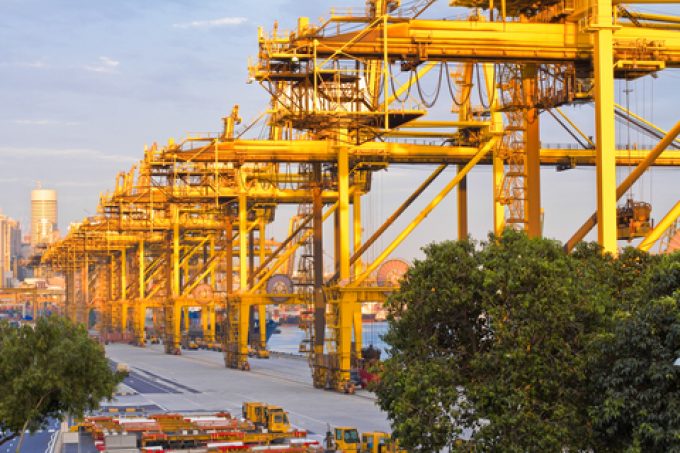Growing demand but slow cash flow poses a 'serious threat' to shippers
An uptick in global trade is building momentum for supply chain recovery in 2024, according ...

Container ports “will take years” to recover from the coronavirus pandemic, but accelerating trade regionalisation could increase hub-and-spoke transhipment services.
According to PSA International CEO Tan Chong Meng, the industry should be prepared for a recession.
“Bankruptcies will increase, unemployment pressures will rise and consumption will remain relatively sluggish in the medium term,” he noted in a letter to employees.
“Therefore, our business, which relies on trade volumes, will likely be set back two to three years – depending on how long the world will debilitate under Covid-19.”
Indeed, recent analysis by Bimco suggests container shipping demand will drop 10% this year.
As well as tumbling volumes, Mr Tan said there would be heightened focus on supply chain risk and resilience, as manufacturers and governments rethink their “over-reliance on certain sources or logistics nodes”.
“Producers and manufacturers might focus more on regionalisation to shorten supply chains, manage inventory differently and reach markets more quickly,” he noted. “This could accelerate the move of production from traditional global factories like China, to regional manufacturing zones.
“For our transhipment activities, hub-and-spoke excellence could become a preferential service over relay transhipment. The game-changers could be intermodal seamlessness and efficiency between sea, rail, barge, truck and air, aided by digital continuity and control across transport modes.”
Jonathan Beard, infrastructure advisory partner at Ernst & Young, agreed countries were likely to reassess supply chains, particularly for medical equipment and critical drugs.
“But the past five years have seen increasing advocacy for re-shoring and near-shoring across the board,” he said. “Advances in robotics and ‘industry 4.0’ are partly behind this shift. The Covid-19 crisis may accelerate it by showing that companies can use new technologies to source closer to home when they need to.”
Furthermore, he argued, any sourcing diversification away from China would be limited, due to the country’s unmatched scale and highly competitive transport and logistics costs relative to other low-cost locations.
“On the other hand, more diverse sourcing and supply chains – or ‘China plus 1’ strategies – could still be positive for trade by allowing goods to circulate more efficiently and resiliently,” he said.
In the meantime, however, Mr Beard said ports and terminals would need to keep operating according to a raft of new regulations and standards for maintaining hygiene and social distancing – a “hugely complex task”.
And he added: “We’re also seeing a big dent in financials. Only three months into the downturn, we’re facing a 10-30% revenue gap and 50-75% of supply chain capacity has been temporarily cut.
“Shipping lines and terminals are already suffering. Port authorities will really begin to feel the effects in a few months’ time, when their tenants start asking for reductions.
“As a result, both ports and terminals are likely to look for savings and efficiencies they can make with little financial outlay – whether that’s through reduced equipment and opex, reconfiguration or revised planning.”
Comment on this article